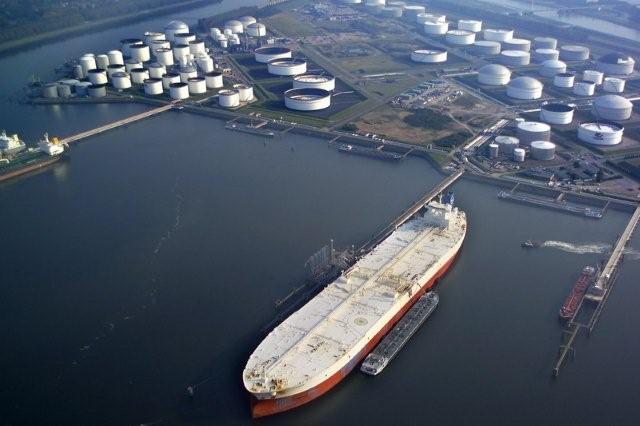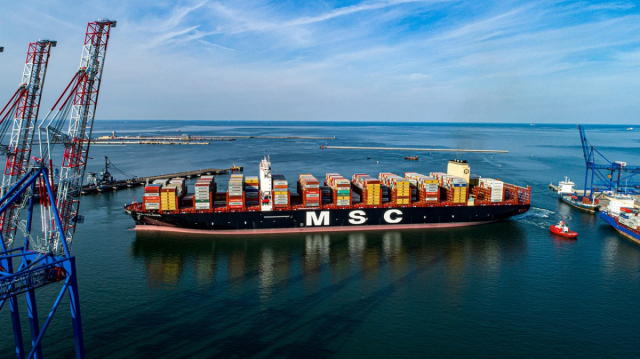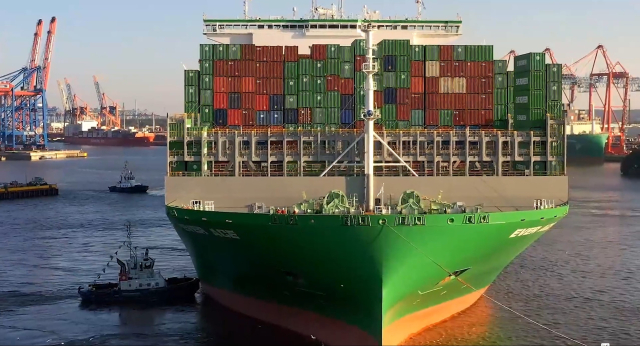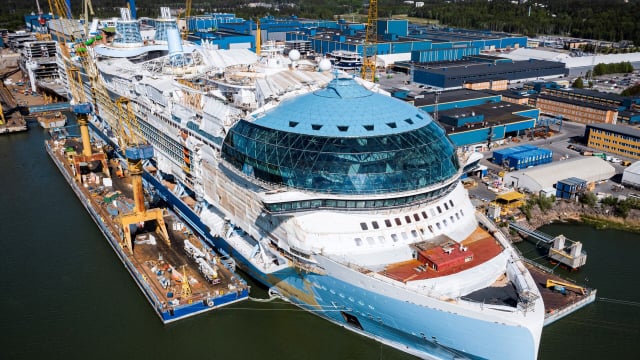Since the earliest days of sailing, mankind has dreamed of mastering the oceans , and nothing better reflects that desire than the colossal vessels that ply the seas today. The world’s largest ships are not only marvels of modern engineering , but also symbols of the human ability to push the boundaries of what is possible. Ranging from massive luxury cruise ships to towering cargo ships, these floating behemoths represent the pinnacle of maritime technology.
Some of these vessels are so large that they could house small cities inside them , with capacity for thousands of people or tons of merchandise. But beyond their size, what is truly fascinating about these ships is their design and function , as some are authentic floating resorts, offering unprecedented luxury experiences, while others are engines of global trade, transporting millions of products along routes that connect continents.
You may also be interested in: Sailing through the Bermuda Triangle
The largest ships in the world
1. Symphony of the Seas (Cruise)
This colossus belongs to the Royal Caribbean shipping line and is considered the largest cruise ship in the world. At over 362 metres long and with 18 decks, it can accommodate up to 6,680 passengers and 2,200 crew members. The Symphony of the Seas is an authentic floating resort, with water parks, ice skating rinks, world-class restaurants and Broadway-style theatre shows. It is the epitome of luxury and entertainment on the high seas. 
2. Prelude FLNG (Liquefied Natural Gas Platform)
Although not a ship in the traditional sense, the Prelude FLNG is one of the largest floating structures in the world. Owned by Shell, this platform is used for the extraction and processing of liquefied natural gas (LNG) directly at sea. It measures 488 metres long, making it the longest vessel in the world. It can produce up to 3.6 million tonnes of LNG per year, and is a testament to industrial capacity in the energy space. 
You may also be interested in: Vloggers to learn about the nautical world
3. Pioneering Spirit (Construction and Transport Ship)
This vessel is one of the largest in the world in terms of tonnage and capacity to transport and lift large structures. The Pioneering Spirit is mainly used in the installation and dismantling of offshore oil platforms, as well as for the installation of subsea pipelines. At 382 metres long and 124 metres wide, it can lift loads of up to 48,000 tonnes, making it an indispensable tool in the oil and gas industry.
4. TI Class Supertankers (Crude Oil Tankers)
These are some of the largest supertankers ever built. The TI Europe, TI Oceania, TI Asia, and TI Africa are all 380 metres long and can carry up to 3.1 million barrels of oil. Although some have now been converted for other uses, they remain symbols of the magnitude of global oil shipping.
You may also be interested in: Sailing to Antarctica
5. MSC Gülsün (Container ship)
MSC Gülsün is the largest container ship in the world, owned by the Mediterranean Shipping Company (MSC). This trading giant has a capacity to carry up to 23,756 TEUs (20-foot containers). With a length of 400 meters and impressive fuel efficiency, this ship represents the spearhead in the evolution of global maritime freight transport.
6. The Ever Ace (Container Ship)
The Ever Ace is one of the largest and newest container ships in the world, owned by the Evergreen Marine Corporation. This colossus measures 400 meters long and 61.5 meters wide, allowing it to carry up to 23,992 TEUs (20-foot containers), surpassing its closest competitor, the MSC Gülsün. The Ever Ace is an example of efficiency in modern maritime transport, designed to reduce fuel consumption and maximize cargo capacity, making it a key player in global trade.
You may also be interested in: Intercontinental navigation
7. Wonder of the Seas (Cruise)
The Wonder of the Seas, also owned by Royal Caribbean, is the largest cruise ship in the world as of 2022, surpassing its sister ship, the Symphony of the Seas. At 362 meters long and 64 meters wide, this giant can accommodate more than 7,000 passengers and about 2,300 crew members. It features 18 decks full of entertainment, including a water park, surf simulators, zip lines, theater shows, a central park with more than 20,000 natural plants, and a wide variety of restaurants and bars. 
Titanic size vs today's largest modern ships
When the Titanic was launched in 1912, she was the largest and most luxurious ship ever built , a symbol of the engineering of her time. At 879 feet long and with a capacity for some 2,435 passengers and 892 crew members , the Titanic represented the very latest in naval technology, being considered "unsinkable." However, today, the world's largest vessels make the legendary Titanic look relatively small.
Take for example the Wonder of the Seas , the largest cruise ship on the planet today. This behemoth measures 362 meters long, almost 100 meters longer than the Titanic, and can hold more than 7,000 passengers, tripling the capacity of the famous ocean liner . What the Titanic offered as unparalleled luxury in its day, today is just a fraction of the amenities and entertainment available on modern cruise ships , such as water parks, surf simulators, natural gardens, and theater shows.
You may also be interested in: International nautical terms
Focusing on the commercial sector, the Ever Ace , one of the largest container ships in the world, is also 400 meters long, more than 130 meters longer than the Titanic , and its cargo capacity is equally astonishing: it can carry nearly 24,000 containers, a figure that overwhelmingly exceeds any cargo capacity the Titanic could have dreamed of.
On the industrial front, the Prelude FLNG is even more impressive at 488 metres long, almost twice the length of the Titanic . Although it is a floating gas platform and not a ship in the traditional sense, its size is a clear demonstration of what technology has achieved. The Prelude is not designed to transport people, but to process natural gas, something that did not exist in the days of the Titanic.
The striking thing about this comparison is that while the Titanic was the pinnacle of naval engineering over a century ago, today it would seem dwarfed by these modern colossi . Not only in length, but also in capacity, efficiency and technology , the ships of the 21st century represent an extraordinary advance. What the Titanic was to its time, these modern vessels are to ours: symbols of innovation, luxury and maritime power.
We invite you to take a look at other articles at: https://yate.co/en/blog


